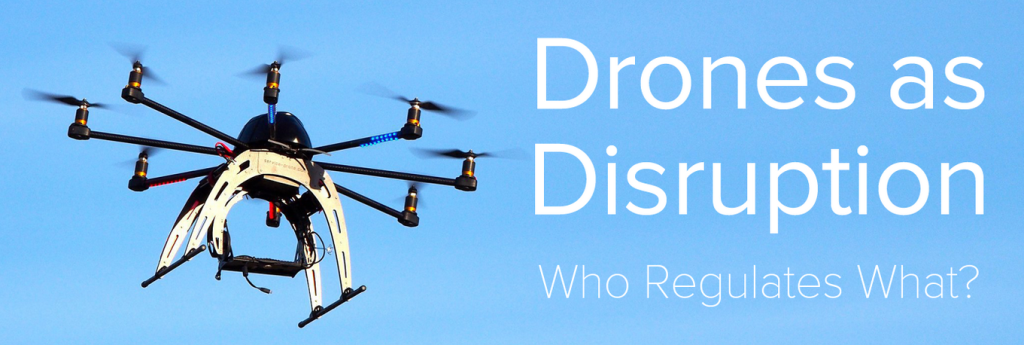Drones as Disruption
I attended a conference today entitled “Drones as Disruption: Who Regulates What?” The conference was held at the Ohio State University (OSU) College of Law. There were a wide variety of panelists and here are some excerpts:
“We engineers are used to solving problems. It looks like we created one here.” David Williams, Dean of the OSU College of Engineering. [Drones that are too easy to fly are too easy to misuse …]
“We don’t allow smoking within a hundred feet of the front of [most] buildings, yet we can legally fly a recreational drone in and out of the entrance of [said] buildings.” John Valasek, Professor of Aerospace Engineering at Texas A&M.
“Infrastructure inspection is great … but I am very concerned about the situation when a drone flying along a highway [perhaps reporting on rush-hour traffic or inspecting nearby power lines] crashes into a car traveling at 70 mph thus startling the driver and causing a chain-reaction pileup.” John Valasek.
Noel Zamot (Corvus Analytics): Worried that there are genius hackers around the world figuring out how to maliciously take over control of commercial drones.
Brendan Schulman (DJI, VP of Policy and Public Affairs): Why would a hacker want to take over your drone? Wouldn’t they just fly one of their own for their nefarious purposes? It’s far more likely that a hacker would want to steal the data that you are collecting with your drone.
Another topic of discussion had to do with the use of drones for journalism. An audience member posed the question: How high do I have to fly a drone over private property (for journalistic purposes) in order not to violate the landowners rights? The panel did not have a good answer. However, almost 70 years ago, the Supreme Court ruled in the matter of the “United States v. Causby” that a landowner owns as least as much of the (air)space above the ground as he or she can occupy or use. In the midwest, for example, trees may grow as high as 100 feet and few would argue that (subject to local codes and ordinances) a landowner may plant trees on his or her property. Thus one could argue that a drone should not be flown at altitudes below 100 feet without the landowner’s permission. However, even this does not adequately address the concerns. First, is 100 feet the correct number? Should it be higher? Second, a landowner could reasonably object to the noise created by a hovering multi-rotor drone (not to mention the privacy issues involved with a stranger parking a camera over your property). Should it be required that drones operate at altitudes such that they cannot be heard from the ground? These kinds of questions are being addressed piecemeal in various state and local legislative bodies while the federal government wrestles with drone operation regulations that are focused almost exclusively on safety issues.
As Dr. Williams indicated, drone designers have created a monumental problem for the regulators. Stay tuned …

